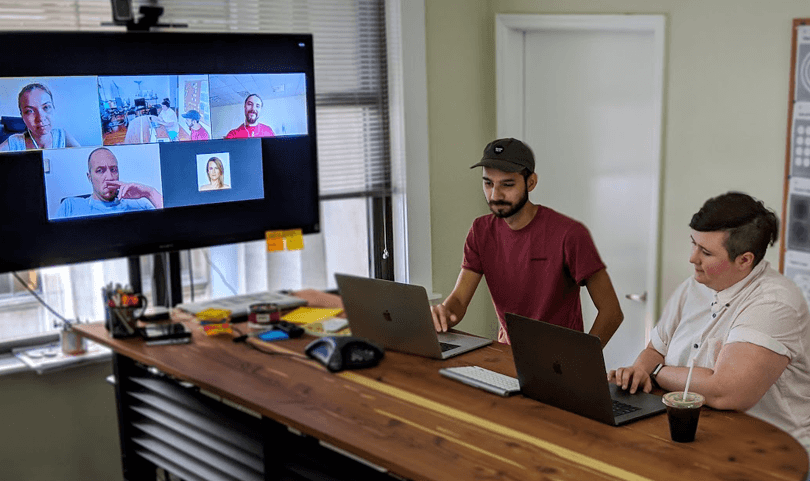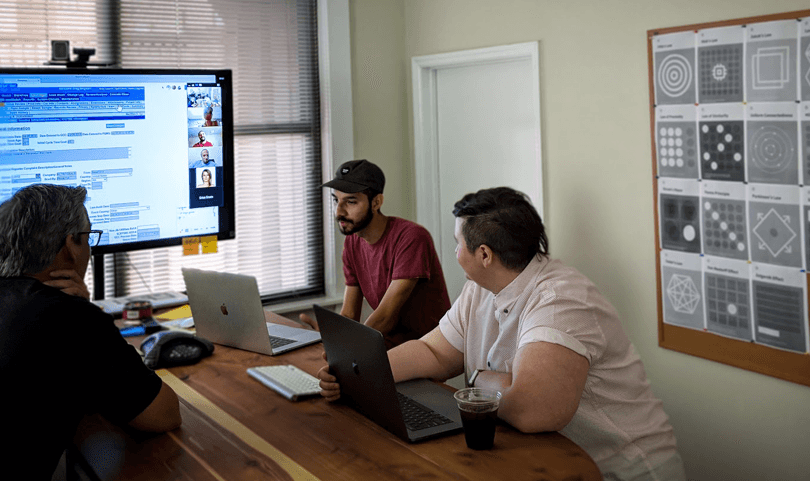How DePalma build collaboration in their design culture
Creative Pairs
For too long, the creative industry has believed the legend of the lone creative genius.
As the story goes, certain individuals are blessed with overwhelming creative ability, and their efforts, in isolation, are what yield pioneering creative ideas.
Yet in his book Powers of Two: Finding the Essence of Innovation in Creative Pairs, Joshua Shenk presents ample historical evidence to refute this idea.
Shenk writes, “…the lone genius is a myth that has outlived its usefulness.”
“The pair is the primary creative unit — not just because pairs produce such a staggering amount of work but also because they help us grasp the concept of dialectic exchange.”
From the Wright Brothers to Paul McCartney and John Lennon,
In fact, modern history is filled with supporting examples: Steve Jobs and Steve Wozniak of Apple, Tom and David Kelley of IDEO, Charles and Ray Eames.
To encourage innovation in our design work, we utilize creative pairs at DePalma.
Depending on the individuals and the project, each creative pair collaborates differently.
Sometimes one of the design pair will only contribute during the client meetings to help their collaborator present the work. Other times, a designer will act as a sounding board and devil’s advocate throughout the design process.
Our goal is not to create a rigid structure that forces designers to work a certain way. Rather we want to foster a culture where every team member has someone they could rely on for constructive feedback.


That way making decisions in moments of uncertainty seems less daunting, and ideas are given the consideration they deserve.
Daily Design Reviews
Every day, each design team gets together to review each other’s work. Once a week, we’ll assemble everyone in the department for a review.
The goal of these meetings is simple: a designer will present what they’ve been working on and the rest of the team gives their feedback.
We like to frame the process in terms of problem-solving. The presenter outlines the problem they’ve been trying to solve for the client, and then they explain their solution.
The rest of the team contributes by coming up with their own solutions to the problem. Or if the design is in a more advanced phase, team members will give input on the specifics of the design.


The value comes from the diversity of opinions. Our design team includes a range of specialists, and they each bring their own perspective.
Allowing every designer in the department to collaborate like this accomplishes two overarching goals:
- It exposes our designs to a range of opinions, which identifies gaps and raises the overall standard of the work. These reviews frequently surface issues that clients bring up in meetings. It’s powerful to say we’ve already addressed their exact question as a group.
- It gives everyone on the team a chance to work on new problems — a practice that encourages creativity. Even if ideas aren’t accepted in that review, they can plant the seeds for future innovation.
Of course, there are caveats. For this model to work, you need to develop an environment where everyone agrees they’re working toward a shared solution that’s best for the client.
Everyone in the review session is a designer, so they understand how to structure feedback. Ultimately, the lead designer on each project decides which feedback to use. This ensures we’re not designing by committee.
Engaging Clients in the Process
Agency work is all about your relationship with the client.
We’ve found the most effective way to develop and maintain a rapport with clients is to make them part of the design process. This type of collaboration takes several forms.
The research we conduct with stakeholders to define our strategy is a form of collaboration. Clients providing consistent feedback as the design evolves is collaboration.
If we’re working with an in-house development team, we make sure they attend any meetings where designs will be on display.
Including clients in the process builds a sense of trust between them and our design team. This trust is critical, because it allows them to follow our lead when they’re unsure about which direction to take.
The simple truth is collaboration builds trust — whether that’s in a one-on-one setting with a creative partner or in an ongoing relationship with a client. And we all need trust to succeed.
That’s why we’ve made collaboration a central part of our design culture. The processes listed above are the vehicles that move collaboration from an idea to habit.


